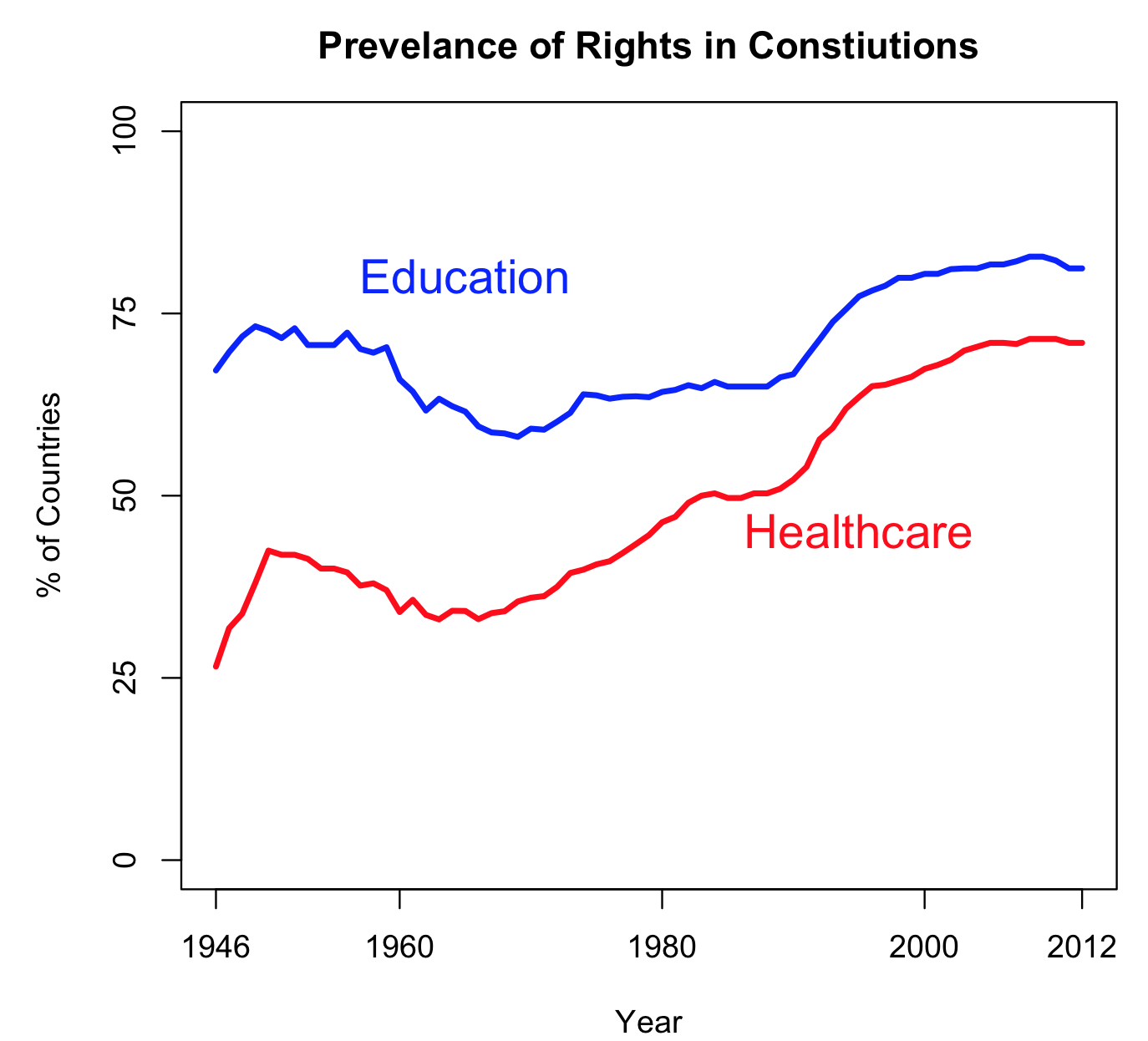A Guest Post by Adam Chilton and Mila Versteeg.
The world’s constitutions have increasingly included commitments to protect social and economic rights. For example, as the figure above shows, by 2012 81 percent of all countries’ constitutions included the right to education and 71 percent protected access to healthcare.
But little is known about whether these rights actually change how governments provide social services to their citizens. In a new paper on the topic, we empirically test whether the inclusion of the right to education and healthcare actually change either government spending or relevant outcomes like school enrollment or life expectancy.
Using a variety of statistical approaches, we consistently find that these rights have no effect: the inclusion of these rights in constitutions are not associated with a statistically significant or substantively meaningful changes in government spending or outcomes.
For example, the figure below shows our estimated effect size from several regressions estimating the relationship between a constitutional right to education and healthcare on the % of GDP that countries spend on education and healthcare. The figure shows a precisely estimated null effect. In other words, the results show that countries that adopt these rights do not change their spending on providing these rights at all. There’s a lot more, as well as the details on these regressions, in the paper.

